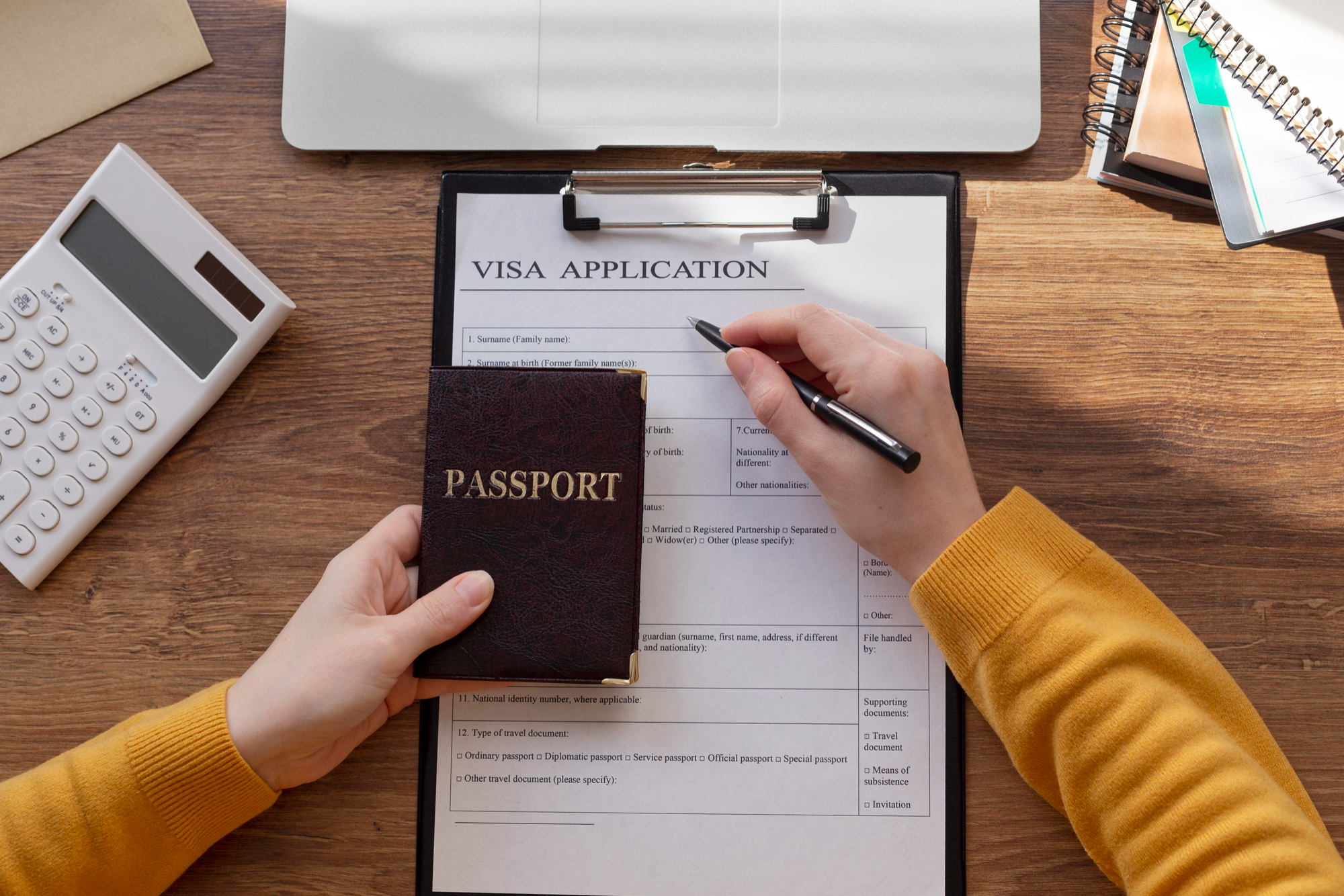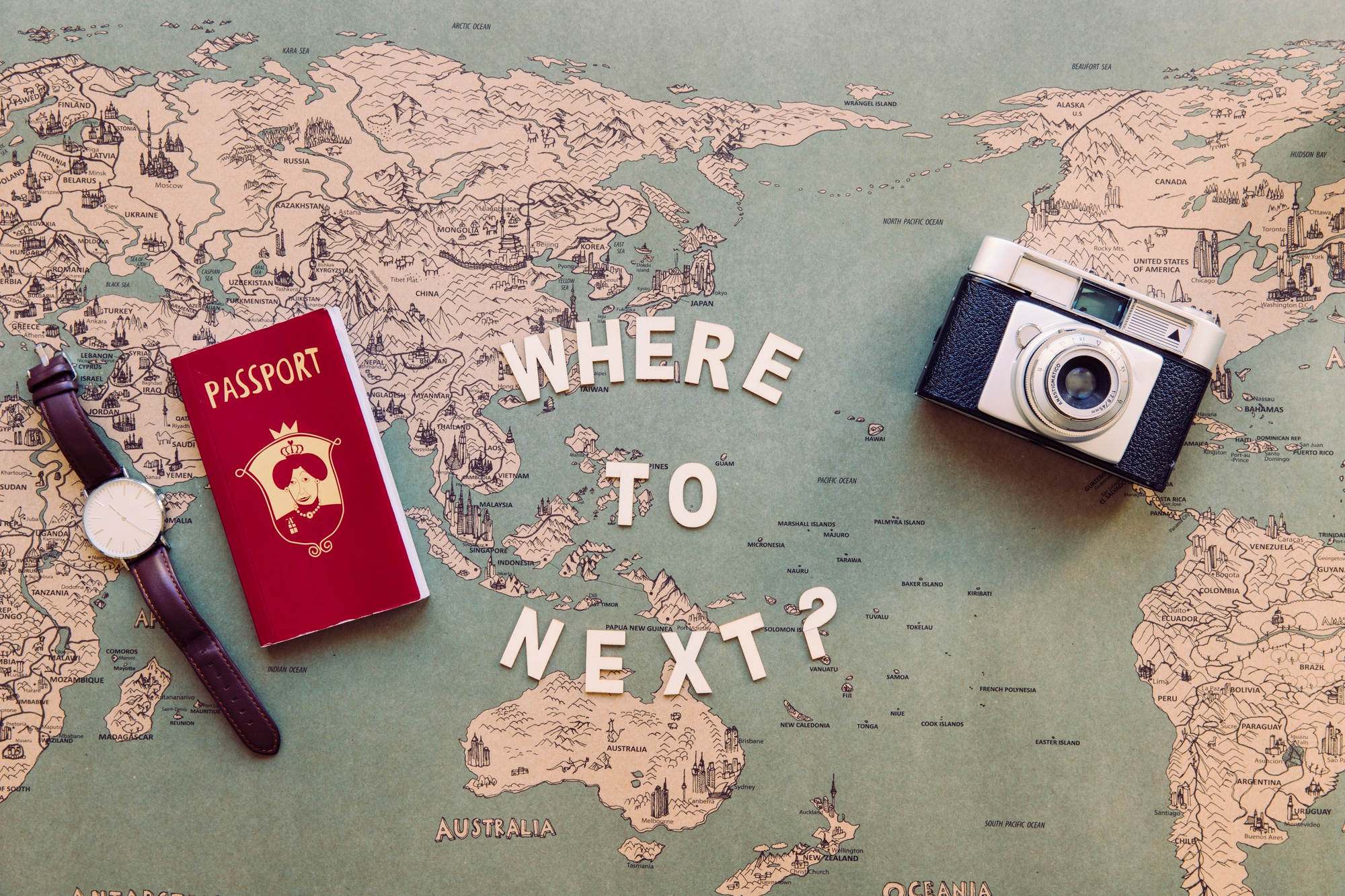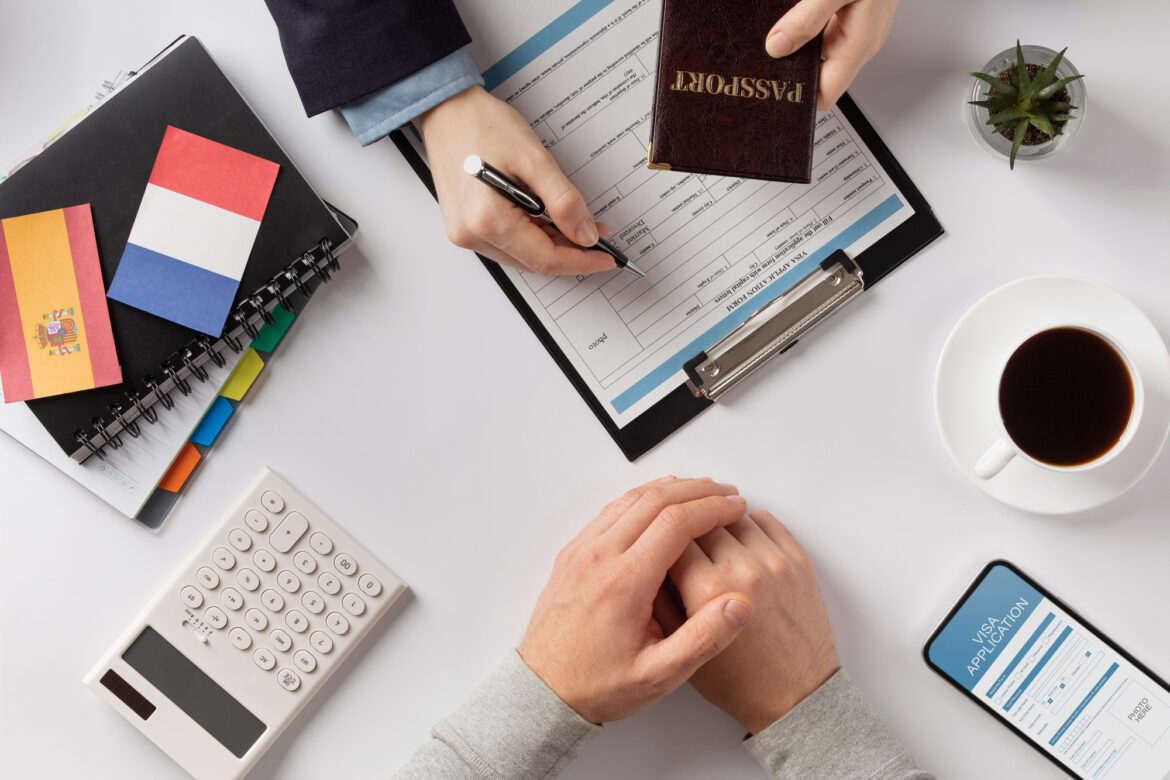Traveling to a different country can be a thrilling adventure, but understanding the visa requirements is essential before you pack your bags. With varying visa regulations depending on your destination, it’s crucial to identify the correct visa type for your purpose of travel. In this guide, we will explore what visa you need for traveling . We’ll also break down what a visa is, the various types, how to determine the best one for you, and how to go through the application process. We’ll also include helpful links to official visa information for a smoother experience.
Table of Contents
ToggleWhat Is a Visa and Why Do You Need One?
A visa is a legal document or stamp issued by a country that allows you to enter, stay, or leave that country for a specified period. It is usually attached to your passport, but with advancements in technology, many countries also offer electronic visas (e-Visas). A visa is important because it signifies that the country you wish to visit has reviewed your information and granted you permission to enter for a specific reason.

Also Read: What to Do If Your Flight Is Delayed or Cancelled? A Complete Guide
Why Do Countries Require Visas?
Countries issue visas to control the number of visitors and ensure that those entering their borders meet the necessary criteria. Here are a few key reasons why visas are required:
- Security: Visas help to screen travelers before they arrive, which enhances national security.
- Immigration Control: Visas allow countries to manage and control immigration more effectively.
- Monitoring Purposes: By issuing visas, countries can monitor the number of people entering and leaving for various purposes such as work, study, or tourism.
For more information on why visas are necessary, visit the U.S. State Department Visa Information Page.
Types of Visas: Which One Do You Need?
Different types of visas are designed for different travel purposes. Here’s a comprehensive guide to help you identify the right visa type:
1. Tourist Visa
- Purpose: Traveling for leisure, tourism, visiting family or friends, and sightseeing.
- Duration: Ranges from 30 days to 6 months, but can vary by country.
- Examples:
- USA B2 Tourist Visa (For non-business purposes).
- Schengen Tourist Visa for traveling across Europe for up to 90 days. For more info, check Schengen Visa Info.
- Documents Needed:
- Valid passport.
- Proof of accommodation (hotel booking or invitation from a host).
- Proof of financial means (bank statements).
- Return flight tickets or travel itinerary.

2. Business Visa
- Purpose: For attending business meetings, trade shows, conferences, or other business-related activities.
- Duration: Typically up to 6 months, depending on the country and nature of business.
- Examples:
- UK Standard Visitor Visa (Business). Learn more at UK Government Visa Guide.
- Australian Business Visitor Visa allows short-term business visits. See Australian Visa Guide.
- Documents Needed:
- Invitation letter from the host company.
- Business registration of the host company.
- Travel itinerary and proof of accommodation.
3. Student Visa
- Purpose: For studying at a school, college, or university in a foreign country.
- Duration: Typically covers the length of the course plus a few extra months.
- Examples:
- USA F-1 Visa for academic studies. Visit U.S. Student Visa Information.
- UK Student Visa (previously Tier 4). Visit UK Study Visa Information.
- Canadian Study Permit for courses longer than 6 months. See Canada Immigration and Citizenship.
- Documents Needed:
- Admission letter from a recognized institution.
- Proof of financial support.
- Health insurance (may be required).
- English language proficiency (like IELTS or TOEFL).
4. Work Visa
- Purpose: For individuals who have a job offer or are being transferred to a branch of their company abroad.
- Duration: Varies based on employment contract, from a few months to several years.
- Examples:
- USA H-1B Visa for specialized workers. Learn more here.
- UK Skilled Worker Visa for job offers in the UK. Visit UK Work Visa Page.
- Australian Temporary Skill Shortage (TSS) Visa allows businesses to sponsor skilled workers. Visit Australian Work Visa Information.
- Documents Needed:
- Job offer letter from the employer.
- Proof of qualifications.
- Sponsor letter from the employer.
- Work contract and sometimes, medical exams.
5. Transit Visa
- Purpose: For travelers passing through a country en route to their final destination.
- Duration: Usually a few days, just enough time to change flights or make a layover.
- Examples:
- USA C-1 Transit Visa for travelers passing through the USA.
- Schengen Transit Visa for traveling through Schengen countries. Check Schengen Visa Info.
- Documents Needed:
- Proof of onward travel.
- Valid visa for the final destination, if required.
- Flight tickets.
How to Determine Which Visa You Need: Step-by-Step Guide
Determining the right visa can seem complicated, but following these steps makes it easier:
1. Define Your Travel Purpose
Ask yourself why you are traveling. This is the foundation of selecting the right visa:
- Tourism: If you are traveling for fun, relaxation, or to visit loved ones, choose a Tourist Visa.
- Business: For business meetings or professional activities, opt for a Business Visa.
- Education: Going to study? A Student Visa is what you need.
- Employment: Relocating for work? Then a Work Visa will be required.

2. Check Country-Specific Requirements
Visa requirements vary significantly from one country to another. To find out what your destination requires:
- Visit the official website of the embassy of the country you plan to visit.
- Use online resources like IATA Travel Centre for up-to-date visa rules.
- Websites like VisaHQ also provide a quick visa check tool for most countries.
3. Assess the Duration of Your Stay
Short-term stays typically require tourist or business visas, while long-term stays (over 90 days) may require a student, work, or family visa. If you are planning to stay longer, check whether a Residence Permit is needed.
4. Check for Visa Waiver Agreements
Some countries have visa-free or visa-on-arrival agreements, which can simplify your travel:
- Schengen Visa Waiver: Allows visitors from countries like the USA, Canada, and Australia to travel within Europe without a visa for up to 90 days. Visit Schengen Visa Waiver for more details.
- Visa Waiver Program (VWP) for the USA: Allows citizens of certain countries to travel to the USA for tourism or business for up to 90 days without a visa. Learn more here.
How to Apply for a Visa: A Detailed Process
Applying for a visa involves multiple steps, and the process may vary by country. Here’s a general guide:
1. Collect the Required Documents
- Valid Passport: Ensure it is valid for at least 6 months beyond your planned stay.
- Visa Application Form: Download and fill out the visa application form from the embassy’s website.
- Passport-Size Photos: Recent photos with a neutral background.
- Financial Proof: Bank statements, proof of income, or sponsorship letters.
- Travel Insurance: Required for many countries, especially within the Schengen Zone. Check for travel insurance options here.
- Additional Documents: Like invitation letters, proof of accommodation, and travel itineraries, depending on the visa type.
2. Submit Your Application
- Visit the embassy or consulate of the country you wish to visit.
- Many countries also allow you to apply online through platforms like the e-Visa system. Check India e-Visa as an example.
3. Pay the Visa Fee
- Visa fees can vary greatly depending on the type and duration. Make sure to pay the fee using the methods approved by the embassy.
4. Attend the Visa Interview
- Some visa types, especially for the USA and Canada, require a face-to-face interview.
- Be prepared to answer questions about your trip, finances, and plans during the interview.
5. Track Your Visa Application Status
- Most countries provide online tools to track the status of your application, like USCIS Case Status Online for U.S. visas.
Common Visa Application Mistakes to Avoid
Getting your visa application right the first time is crucial. Here are some common mistakes to watch out for:
- Incomplete Forms: Always double-check your application form for missing information.
- Insufficient Funds: Make sure to have proof of enough funds for your stay.
- Not Checking Expiry Dates: Your passport should be valid for at least six months beyond your return date.
- Incorrect Visa Type: Apply for the visa that matches your travel purpose.
- Ignoring Country-Specific Instructions: Always check if the country you are visiting requires additional documents or medical checks.
For more tips on avoiding visa mistakes, visit Visa Guide.
Useful Resources for Visa Information
Here are some additional links that provide detailed visa guidance:
- IATA Travel Centre: Up-to-date travel information.
- VisaHQ: Check visa requirements for your destination.
- Travel.State.Gov: U.S. State Department visa information.
- Schengen Visa Info: Detailed information on traveling in Europe.
- Gov.uk: UK visa and immigration information.
Conclusion: Be Prepared for a Smooth Journey
Understanding visa requirements is essential to ensure your travel plans go smoothly. Always start by identifying your travel purpose, gathering the required documents, and checking country-specific rules. With the right visa, you can explore new destinations confidently and without worries. Happy travels!
FAQ: How to Know What Visa You Need for Traveling
1. What is a travel visa, and why do I need one?
A travel visa is an official document or endorsement from a country’s government that allows you to enter, stay, and leave their territory for a specific period. Visas are necessary because they help governments regulate the flow of visitors into their country, ensuring that travelers meet certain criteria such as having a clear travel purpose, sufficient funds, or meeting health requirements. Depending on the type, a visa might grant permission for tourism, business, study, or work purposes. Without the appropriate visa, you may be denied entry or face legal issues in your destination country.
2. How do I determine which type of visa I need?
To determine which visa you need, you must first understand your purpose of travel. For tourism, a tourist visa is typically required. If you are traveling for business meetings or conferences, a business visa is appropriate. For studying, you will need a student visa, and for employment, a work visa is required. It’s crucial to research the specific visa types available for your destination country. Many countries have detailed guides on their embassy websites that outline the categories and eligibility criteria for each visa type.
3. Are there differences between single-entry and multiple-entry visas?
Yes, single-entry and multiple-entry visas differ in the number of times you can enter the country using the same visa. A single-entry visa allows you to enter the country only once. If you leave, even before the visa expires, you would need to apply for a new one to return. In contrast, a multiple-entry visa lets you enter and exit the country as many times as needed within a specified period, such as six months or a year. Multiple-entry visas are often more convenient for travelers who plan to visit nearby countries and return, but they may come with stricter eligibility criteria and higher fees.
4. How can I find out if I need a visa for my destination?
To find out if you need a visa, visit the official website of the embassy or consulate of the country you plan to visit. These sites provide the most accurate and updated information on visa requirements for different nationalities. You can also use online visa-check tools like the IATA Travel Centre or services like VisaHQ, where you enter your nationality and travel destination to get a summary of visa requirements. Remember that visa rules can vary significantly based on bilateral agreements between countries, so always rely on official sources.
5. What documents are generally required for a visa application?
The documents required for a visa application vary by country and visa type, but common requirements include:
- A valid passport with at least six months of validity beyond your planned return date.
- A completed visa application form.
- Passport-sized photographs.
- Proof of accommodation, such as hotel reservations.
- Round-trip flight itinerary.
- Financial statements to prove you can support yourself during the trip.
- Travel insurance, which is mandatory for many countries, especially in the Schengen area.
- A letter of invitation if visiting family or attending a business event. Always verify the specific documents required with the embassy or consulate to avoid delays or rejection.
6. How long does the visa application process take?
The visa application process can take anywhere from a few days to several weeks, depending on the country and visa type. For instance, tourist visas for many countries like Thailand or Malaysia may be processed within 5-10 business days, while Schengen visa applications might take 15-30 days due to additional checks. If you are applying for a work or student visa, the processing time can extend up to a few months due to background checks and the requirement of supplementary documentation like employment contracts or university acceptance letters. It is advisable to apply for a visa at least two to three months before your travel date to avoid any last-minute issues.
7. Can I apply for a visa online, or do I need to visit the embassy?
Many countries now offer e-Visas or online visa applications, which allow you to complete the entire process digitally, including payment and document submission. For example, countries like India, Turkey, and Kenya have e-Visa systems that are convenient for tourists. However, certain visa types, such as work visas or long-term residence permits, often require an in-person appointment at an embassy or consulate for interviews and biometric data collection. It’s important to check if your destination offers an online option or if you need to appear in person.
8. What happens if my visa application is denied?
If your visa application is denied, you will typically receive a letter explaining the reason for the denial. Common reasons include insufficient supporting documents, incorrect visa type, or doubts about your intention to return to your home country. You can appeal the decision if the country allows it, or you can reapply with additional or corrected information. For example, in the Schengen visa process, applicants often have the right to appeal. It is crucial to understand the reasons for denial and address them before reapplying to improve your chances of approval.
9. Do I need a transit visa if I have a layover in another country?
A transit visa is required when you have a layover in a country that does not allow visa-free passage for your nationality. For instance, if you have a layover in a Schengen country, you may need a Schengen transit visa if you’re a national of a country that requires a visa to enter the Schengen area. However, many countries provide airside transit exemptions, which allow passengers to stay in the international zone of the airport without a visa if they are not leaving the airport or clearing customs. Always check the transit visa requirements with the embassy or the airline before booking your flights.
10. What should I do if my visa expires while I am still in the country?
If your visa expires while you are still in the country, it’s important to act immediately to avoid overstaying. Depending on the country, you may apply for an extension before your visa expires. For example, many countries allow extensions for tourist or business visas. If you cannot get an extension, you should leave the country promptly to avoid penalties, such as fines, deportation, or a ban on future entry. Overstaying can severely impact your chances of obtaining future visas. Always keep track of your visa’s validity and have a clear plan for departure or extension before it expires.
